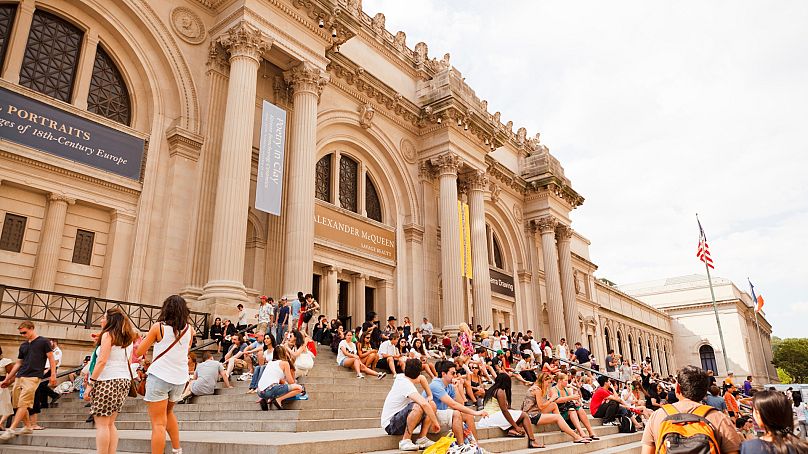The Metropolitan Museum has launched a new project to discover if any of the works in its archive unlawfully stolen.
Based in Manhattan, New York City, the Met has faced increased scrutiny over its collection after Turkish authorities seized a bronze statue of Roman Emperor Septimius Severus worth $25 million.
In March, the Met released a report investigating the scale of stolen items at the museum. 1,109 antiquities were revealed to be connected to people with “either indicted or convicted of antiquities crimes”, 309 of which were currently on display.
Within that group, 20 items were characterised as looted in an investigation by Manhattan’s District Attorney. Alongside the headless Roman statue, 11 other items are returning to Turkey including a bronze statue of Severus’ son, Cacalla who succeeded Severus to rule Rome in 198 AD.
The father-son duo of emperor statues were discovered in an archaeology site in Bubon, the once capital of the Roman province of Lycia, in modern day Türkiye.
Cambodian officials have identified at least 45 artefacts at the Met that were stolen from their country. The Met have also announced the return of 15 sculptures to India, ranging from 1st century BC to the 11th century AD.
The Met’s archives are extensive with over 1.5 million works covering 5,000 years of history. With a collection like that, the provenance of pieces becomes a complex task wrought with challenging historical legacies.
“As a pre-eminent voice in the global art community, it is incumbent upon the Met to engage more intensively and proactively in examining certain areas of our collection,” Max Hollein, the museum’s director, said in a letter. He added that “the emergence of new and additional information, along with the changing climate on cultural property, demands that we dedicate additional resources to this work.”
As a result, Hollein announced that the Met is growing its provenance team. They will bring in a manager of provenance research and three provenance researchers.
With four people, it’s the largest provenance team of a US institution, surpassing an equivalent one-person team at the Museum of Fine Arts, Boston.
But that’s not where it ends. The Met has announced a new committee of 18 curators and conservators to reconsider the museum’s responsibilities and policies when it comes to increasing or maintaining its collection.
It’s a move that echoes the New York Museum of Modern Art’s (MoMA) research in the early 2000s to ascertain the exact provenance of any works created before 1946 and acquired after 1932. The work brought clarity on 800 paintings MoMA had that they hadn’t verified whether they were the product of Nazi looting.
The Met’s questionable collection is more concerned with the acquisitions made between 1970 and 1990. An era of rapid growth for the museum, many objects were brought in at a time that UNESCO treaties were put in force that intended to crack down on the illicit trade of antiquities.
Back then, an attitude of not acquiring a known-stolen item was sufficient. “The attitude today is, don’t acquire something unless you know it’s not stolen. It’s a 180-degree difference,” Maxwell Anderson, director of institutions like the Whitney Museum of American Art and the Dallas Museum of Art, told the New York Times.
Returns and restitutions abroad
Restitution is a hot topic in the museum sector as the Vatican recently returned three sculptural fragments of the Parthenon Marbles to Greece.
Considered one of Greece’s sovereign objects, the ownership of the Parthenon Marbles by multiple foreign museums has long been a contentious matter for the country. Nowhere is that discussion more heated than with the British Museum in London, where the largest collection outside of Greece is.
The selection of the 5th century BC sculptures held in the British Museum were obtained by Thomas Bruce, 7th Earl of Elgin when Greece was under Ottoman control in the early 19th century. Greece and Britain have long argued over the legalities of whether the marbles were looted or given freely.
A watershed report written by Senegalese academic Felwine Starr and French art historian Bénédicte Savoy recommended that French museums return tens of thousands of items, many of them looted, to countries in Sub-Saharan Africa. At the time, President Macron endorsed the report’s conclusions but it took a while for any concrete action.
Over the last couple of years, however, a number of important items have been returned from French, German and American museums to Nigeria in particular; while some other significant pieces have been sent back to DR Congo from Belgium, as that country goes through a period of necessary reappraisal of its own brutal colonial past.












